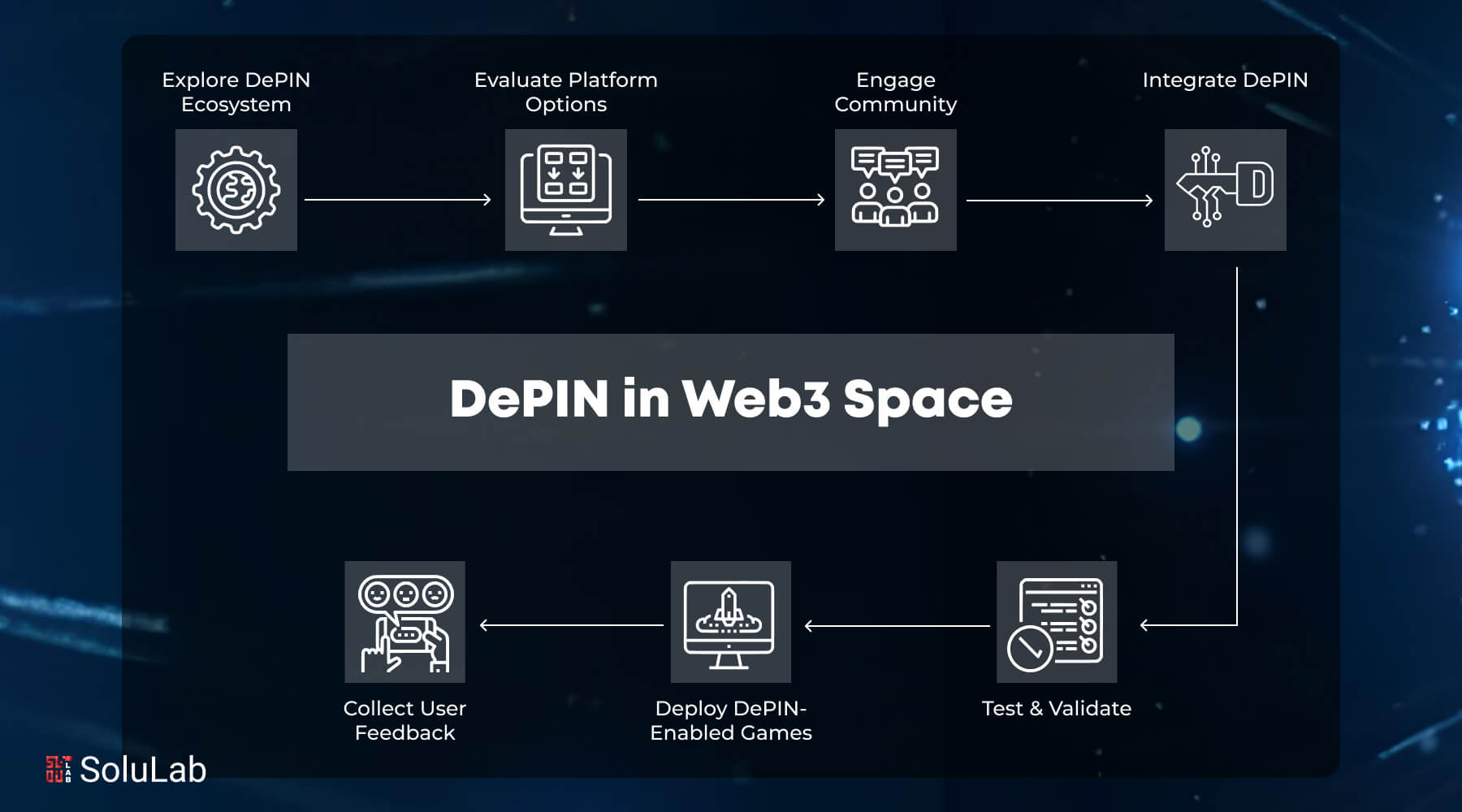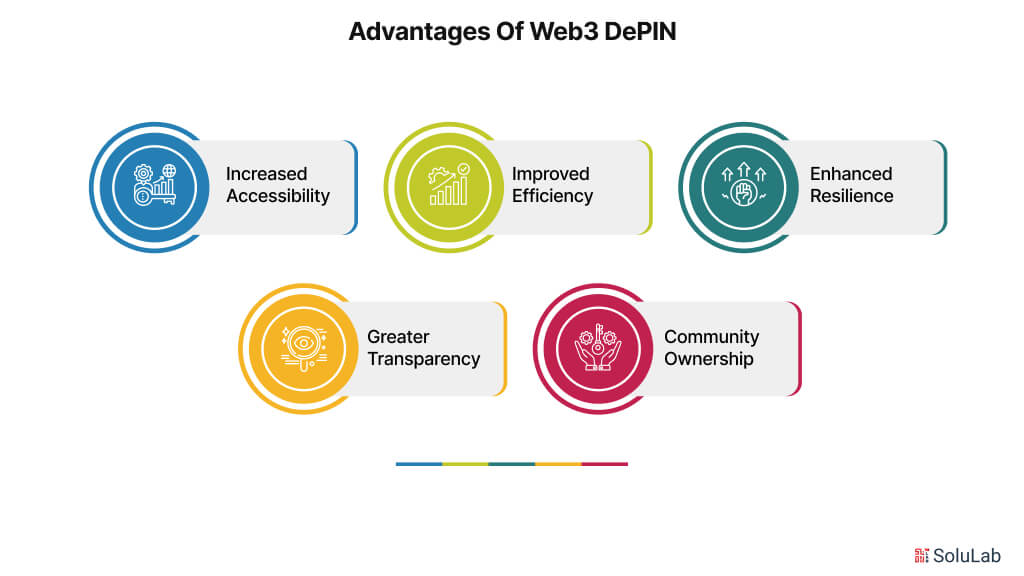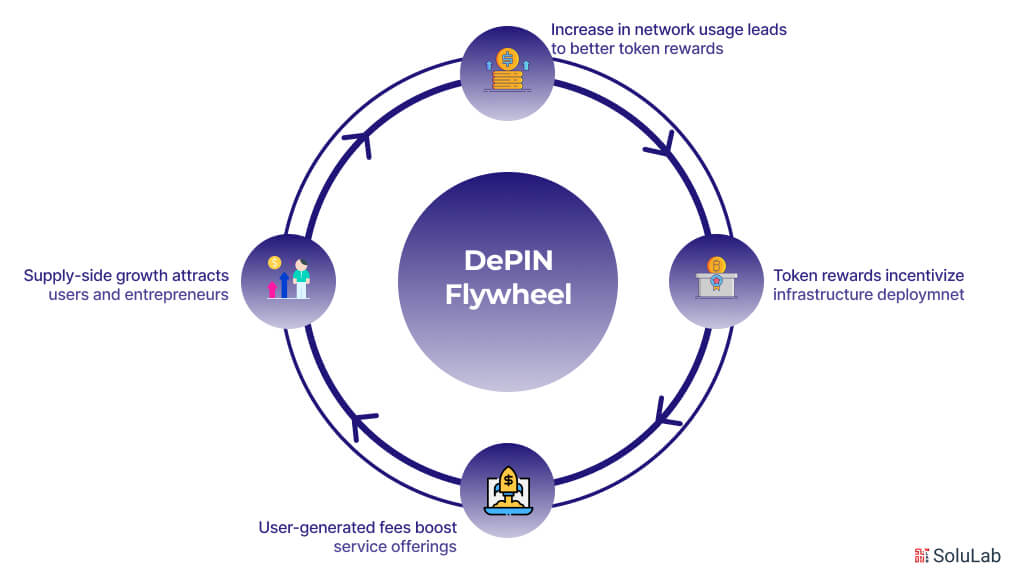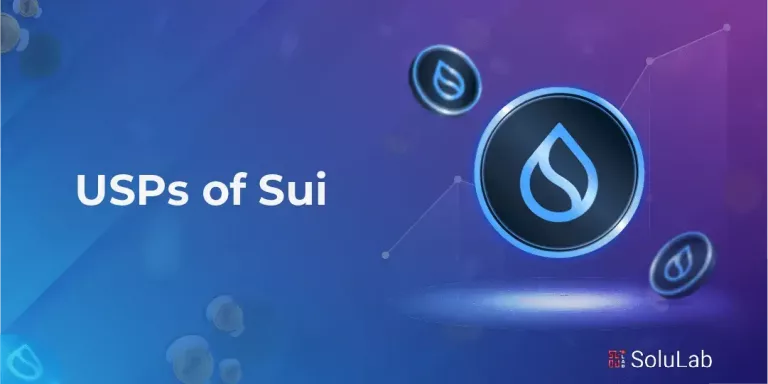
The Decentralized Physical Infrastructure Networks (DePin) market is flourishing, with critical metrics highlighting its growing prevalence. In August 2024, the DePin market cap surged by 22.7% against the declining trend observed in many other sectors.
However, the broader trends reveal significant momentum: the DePin market cap skyrocketed by 400%, reaching $20 billion, while fundraising volume witnessed a remarkable increase of 296% year-over-year. These remarkable figures reflect the growing confidence and support from both developers and investors, reinforcing DePin’s potential to upgrade infrastructure management.
In the era of quick technological advancements, our dependence on physical infrastructure remains determined. Centralized systems such as energy grids and wireless networks often encounter inefficiencies and vulnerabilities, limiting accessibility. However, a new concept known as Web3 DePIN emerges, utilizing blockchain technology to decentralize physical infrastructure networks. In this captivating blog post, we explore the potential applications and transformative impact of Web3 DePIN across various industries.
Understanding Web3 DePIN
Decentralized Physical Infrastructure Networks (DePINs) stand as an approach to infrastructure ownership and management. Powered by blockchain technology, tokenization, and decentralized governance, DePIN in Web3 envisions community-owned and operated infrastructure networks. This groundbreaking concept disrupts traditional centralized infrastructure models, ushering in a more inclusive and democratic approach.
The essence of DePIN in Web3 lies in decentralization and community empowerment. Unlike conventional infrastructure systems dominated by singular entities or governments, DePINs are designed to be owned and operated by the community itself. This decentralized structure ensures that decisions regarding infrastructure development, maintenance, and allocation are made collectively by network participants. As a result, transparency, accountability, and inclusivity become integral principles guiding the management of these infrastructure networks.
DePIN in Web3 enables tokenization, which represents a transformative aspect of this concept. Tokens serve as a means of ownership and governance, empowering community members to actively participate in decision-making processes. This innovative approach fosters a sense of collective ownership and encourages individuals to contribute their skills, resources, and ideas to the growth and sustainability of the infrastructure networks.
Through tokenization, DePIN in Web3 provides a unique incentive mechanism to encourage individuals and organizations to contribute resources to the network. Contributors can offer various resources, such as storage capacity, processing power, bandwidth, or even physical assets like renewable energy sources. In return, they receive tokens that represent their contribution and entitle them to a share of the network’s revenue. This token-based incentive system transforms infrastructure providers into stakeholders with a vested interest in the network’s success. By aligning the interests of contributors with the overall health and sustainability of the infrastructure, DePINs foster a sense of collective responsibility and encourage active participation in network maintenance and improvement. DePINs have the potential to change various sectors by providing cost-effective, scalable, and resilient infrastructure solutions. For instance, in the telecommunications industry, DePINs can facilitate the creation of decentralized networks that offer affordable and reliable internet access to underserved communities. Similarly, in the energy sector, DePINs can enable the development of peer-to-peer energy trading platforms, allowing individuals and businesses to buy and sell renewable energy directly from each other.
Key Advantages of Web3 DePIN

Web3 DePIN, a concept that uses blockchain technology to decentralize physical infrastructure networks, holds immense potential to transform various industries. Here are some key advantages of Web3 DePIN:
-
Increased Accessibility
DePIN (decentralized infrastructure platforms) has the potential to change access to essential services for underserved communities. By bypassing centralized providers, DePIN can enable communities to gain access to the internet, renewable energy, and other vital resources, regardless of their location or socioeconomic status. This can have a profound impact on the lives of individuals and families, providing them with opportunities for education, healthcare, and economic development. Decentralized Physical Infrastructure plays a crucial role in enabling this by providing community-driven solutions that ensure access to these essential services. For example, in remote areas where traditional infrastructure is lacking, DePIN can provide a lifeline for communities that have been historically marginalized, empowering them to participate fully in the digital economy and improve their quality of life.
-
Improved Efficiency
DePIN can optimize resource allocation and reduce reliance on intermediaries, resulting in more efficient and cost-effective infrastructure. By utilizing blockchain technology, DePIN can create transparent and auditable systems that eliminate inefficiencies and corruption, supporting various web3 use cases. This can lead to reduced costs for consumers and businesses, as well as increased productivity and economic growth. For example, in the energy sector, DePIN can enable peer-to-peer energy trading, allowing consumers to buy and sell energy directly from each other without the need for intermediaries. This can result in lower energy costs and increased competition, benefiting both consumers and producers.
-
Enhanced Resilience
Decentralized networks are inherently more resilient than centralized systems because they lack single points of failure. In the event of a natural disaster or cyberattack, DePIN can continue to operate, ensuring that critical services remain available. This resilience is essential for communities that are vulnerable to disruptions, such as remote areas or areas prone to natural disasters. For example, in the aftermath of a hurricane, DePIN can provide a reliable communication network for emergency responders and residents, helping to coordinate relief efforts and restore essential services.
-
Greater Transparency
Blockchain technology ensures that all transactions and operations on DePIN are transparent and auditable. This fosters trust and accountability, as anyone can view the history of a transaction and verify its authenticity. Greater transparency can help to reduce corruption and ensure that resources are used effectively and efficiently. For example, in the supply chain management sector, DePIN can provide a transparent and auditable record of transactions, allowing businesses to track the movement of goods and ensure that products are ethically sourced.
DO YOU KNOW? As of 2023, DePIN Ninjia and Messari’s data showed that the DePIN ecosystem consisted of approximately 650 projects, boasting a collective market capitalization of $35 billion.
-
Community Ownership
DePIN empowers individuals to become active participants in infrastructure development and governance. By providing accessible and affordable tools, DePIN enables communities to take ownership of their infrastructure and make decisions that reflect their needs and priorities. This can lead to increased civic engagement and a greater sense of community pride. For example, in the water management sector, DePIN can enable communities to collectively manage their water resources, ensuring that water is distributed fairly and sustainably.
Role of DePIN in Web3 Gaming
In contrast to traditional centralized power structures that favor established gaming platforms, Web3 Gaming aims to establish a decentralized model. However, this transition poses unique challenges, particularly regarding infrastructure. Central servers in most Web3 games can lead to inconvenience, latency, security issues, and censorship, undermining the philosophy of decentralization. DePIN blockchain in Web3 gaming addresses these gaps.
DePIN blockchain is a model where the physical infrastructure necessary for running dApps, such as servers, nodes, and networks, is not owned by a single entity but distributed among participants in a network. This democratized approach enhances the robustness and reliability of Web3 games. The significance of DePIN in Web3 game development includes:
-
Decentralization
In DePIN, the infrastructure is distributed across a network of nodes, rather than being centralized in a single location. This eliminates the risk of a single point of failure, which could lead to attacks or service disruptions. As a result, players and developers are less vulnerable to these threats, creating a more secure and reliable gaming environment.
Read Blog: Use Cases of DePIN in 2025
-
Incentivized Contribution
DePIN encourages community members to contribute to the infrastructure by rewarding them with tokens in return. This creates a virtuous cycle, where more contributions lead to a stronger and more reliable network, which in turn attracts more users and developers. As a result, DePIN fosters a vibrant and engaged community that is invested in the success of the platform.
-
Scalability
By utilizing a decentralized network of nodes, DePIN can scale more effectively than traditional centralized gaming platforms. This is because the load is distributed across multiple nodes, rather than being concentrated in a single location. As a result, DePIN can support larger communities of players without compromising performance.
-
Enhanced Security
The decentralized nature of DePIN also enhances security. In a centralized system, all of the data is stored in a single location, which makes it a target for hackers. However, in DePIN, the data is distributed across a network of nodes, making it much more difficult for hackers to access. This builds trust among users and drives greater adoption of Web3 game development services.
Examples of Web3 DePIN

Several DePIN projects are already making waves, demonstrating the practical applications of decentralized infrastructure platforms in various industries. Here are a few notable examples:
1. Helium
Helium is a decentralized wireless network powered by a global network of hotspots. It aims to provide affordable and reliable internet access to everyone, regardless of their location. Helium hotspots are small, low-power devices that are installed in homes and businesses. These hotspots provide wireless coverage to nearby devices and earn HNT, the native token of the Helium network, for their contributions.
As a web3 development company, Helium operates on a blockchain-based network, which means that it is secure, transparent, and auditable. This makes it an attractive option for businesses and individuals who are looking for a reliable and affordable way to provide internet access. Helium is also a great way to get involved in the blockchain revolution and support a project with a positive social impact.
2. Filecoin
Filecoin is a decentralized storage network that allows users to rent out their unused hard drive space. It is a peer-to-peer network, meaning that there is no central authority controlling the network. Instead, Filecoin relies on a network of computers to store and retrieve data. This makes Filecoin a more secure and reliable option than traditional cloud storage providers.
Filecoin is also a blockchain-based network, which means that it is secure, transparent, and auditable. This makes it an attractive option for businesses and individuals who are looking for a safe and secure way to store their data. Filecoin is also a great way to get involved in the blockchain revolution and support a project with a positive social impact.
3. Golem
Golem is a decentralized computing platform that enables users to access and share computing power. It is a peer-to-peer network, meaning that there is no central authority controlling the network. Instead, Golem relies on a network of computers to provide computing power to users. This makes Golem a more affordable and scalable option than traditional cloud computing providers.
Golem is also a blockchain-based network, which means that it is secure, transparent, and auditable. This makes it an attractive option for businesses and individuals who are looking for a reliable and affordable way to access computing power. Golem is also a great way to get involved in the blockchain revolution and support a project with a positive social impact.
4. Render Network
Render Network is a decentralized network for rendering 3D graphics. It provides artists and studios with affordable and scalable rendering power. Render Network is a peer-to-peer network, meaning that there is no central authority controlling the network. Instead, Render Network relies on physical infrastructure in Web3, a network of computers to provide rendering power to users. This makes Render Network a more affordable and scalable option than traditional rendering farms.
Render Network is also a blockchain-based network, which means that it is secure, transparent, and auditable. This makes it an attractive option for businesses and individuals who are looking for a reliable and affordable way to render 3D graphics. Render Network is also a great way to get involved in the blockchain revolution and support a project with a positive social impact.
Why Choose DePIN for Web3 Gaming?
Web3 Gaming, with the infusion of DePIN, brings several much-needed advantages that can enhance the all-around experience of playing games and game development procedures. Some of the most important advantages include the following:
1. Player Empowerment
Beyond being passive consumers, DePIN transforms players into active stakeholders within the game’s ecosystem. Players can participate in the governance of the game through decentralized autonomous organizations (DAOs), where they can vote on proposals that impact the game’s development, economy, and rules. By incorporating DePIN technology Web3, players can also contribute to the validation of transactions by running nodes, which helps secure the network and ensures the integrity of in-game transactions. In return for their contribution of resources to the network, players receive rewards in the form of tokens or other valuable assets, creating a sense of ownership and emotional engagement that is unmatched in traditional gaming models.
2. Economic Opportunities
DePIN has already flipped the economy of Web3 gaming by introducing a more sustainable and equitable game model. Unlike traditional centralized games, DePIN eliminates the need for expensive infrastructure, such as servers and data centers, reducing the financial burden on game developers. This allows developers to focus on creating creative and engaging games without worrying about the high costs associated with traditional game development. Additionally, the DePIN protocol Web3 enables players to monetize their in-game assets in a decentralized marketplace. Players can buy, sell, or trade their digital assets with other players, creating a vibrant economy that benefits both players and developers.
3. More Engaging Gameplay Experience
DePIN enhances the gameplay experience by providing ultra-low latency and increased accessibility. The decentralized architecture of DePIN allows for faster and more efficient communication between players and the game server, resulting in smoother and more responsive gaming sessions. This is especially important for games that require real-time interaction and rapid responses, such as first-person shooters and multiplayer online battle arenas (MOBAs). Additionally, the Decentralized infrastructure Web3 increases accessibility, allowing players to enjoy Web3 games from anywhere with an internet connection, eliminating the need for expensive gaming hardware or consoles.

4. More Innovations
DePIN fosters a culture of innovation in Web3 game development. The decentralized infrastructure provided by DePIN allows developers to experiment with new game mechanics and create entirely new genres that were previously impossible in traditional gaming models. For example, DePIN in Web3 gaming enables the creation of games that are truly player-owned and player-governed, where players have a direct say in the development and direction of the game. Additionally, DePIN opens up the possibility for interoperable games, where assets and progress can be transferred between different games and experiences.
5. Community Development
DePIN enables Web3 gaming developers to create games that better reflect the wishes and choices of their players. Through decentralized governance mechanisms, AI in Web3 Development allows developers to involve their community in the decision-making process, gathering feedback and suggestions on various aspects of the game. This participatory approach ensures that games are aligned with player expectations, leading to increased player satisfaction and retention. DePIN also facilitates the formation of strong and vibrant communities around Web3 games, where players can connect, socialize, and collaborate to create a shared gaming experience.
Steps to Leverage DePIN in Web3 Gaming
The advent of decentralized peer-to-peer infrastructure (DePIN) has upgraded the gaming industry, ushering in a new era of Web3 gaming. With its decentralized architecture and suite of benefits, DePIN offers unprecedented opportunities for game developers and players alike. Let’s dive into the steps involved in leveraging DePIN in Web3 gaming.
-
Understanding the Ecosystem
Delve into the foundational principles of Web3, unraveling the intricate workings of blockchain technology and decentralized networks. Gain a comprehensive grasp of how these components synergistically interact to facilitate the flourishing development of Web3 games. Critically assess the advantages and constraints inherent in decentralized networks in Web3 gaming, discerning how they can be strategically leveraged to craft immersive and sustainable gaming experiences.
-
Selection of Platforms
Explore the diversity of decentralized networks and protocols that provide the infrastructure for DePIN, including prominent platforms like Ethereum, Polygon, Immutable X, and more. Conduct thorough research into each platform’s unique features, transaction costs, scalability, security measures, and the strength of its community support. Strategically select the platform that most closely aligns with your game’s vision, technical requirements, and target audience, ensuring optimal integration and maximizing the potential for success.
-
Engagement with DePIN Community
Engage yourself in online forums, communities, and social media groups dedicated to Web3 game development and DePIN within the Decentralized Web3 Ecosystem. Forge meaningful connections with fellow developers, designers, and enthusiasts. Share your ideas, learn from the experiences of others, and stay abreast of the latest advancements and technologies shaping the field. Actively participate in discussions, contribute to open-source projects, and solicit constructive feedback on your own work. By engaging with the DePIN community, you tap into a wealth of knowledge and insights, fostering creativity and propelling innovation forward.
-
Partnership with Web3 Game Development Companies
Forge strategic partnerships with seasoned Web3 game development companies that possess specialized expertise in DePIN integration. These companies offer invaluable services designed to the unique demands of DePIN, providing professional guidance, technical prowess, and essential resources. Collaborate closely with their teams to ensure seamless integration of DePIN solutions into your game, unlocking the full potential of decentralized technology. By leveraging the experience and expertise of these partners, you accelerate your development process, mitigate risks, and enhance the overall quality of your game.
-
Development and Testing
Once conceptualization and content creation are finalized, embark on the exciting journey of building your game while seamlessly incorporating DePIN elements into its design. Adopt agile development methodologies that prioritize rapid iteration and responsiveness to feedback. Conduct rigorous testing in controlled environments to identify and resolve any potential bugs or issues before the game’s official release. Pay meticulous attention to testing the DePIN applications Web3 components, ensuring they function flawlessly and deliver a frictionless user experience. By investing in thorough testing, you instill confidence in your players and lay the foundation for a successful launch.
-
Launching and Collecting Feedback
Upon launching your game, actively seek out player feedback through various channels such as social media, in-game forums, and community feedback mechanisms. Engage with your audience, gather insights, and solicit suggestions for improvement. Assume decentralized community approaches that involve players in the development process, empowering them to contribute to decision-making and decide the future of the game. By aligning your game with Web3 infrastructure projects, you can further enhance decentralization and community involvement. By listening attentively to your players and incorporating their feedback, you can continuously enhance the gaming experience, foster a sense of ownership among your community, and ensure the long-term success of your Web3 game.
Conclusion
In conclusion, DePIN in Web3 Space is deciding the future of decentralized applications by upgrading industries with its decentralized infrastructure. From enhanced gameplay experiences in Web3 gaming to more efficient business models, DePIN offers a new dimension of decentralized operations. By leveraging blockchain technology, DePIN introduces solutions that align with the ongoing evolution of decentralized finance. As we look ahead, DePIN Blockchain as a Service will continue to play a critical role in advancing decentralized systems, creating sustainable opportunities across multiple sectors.
We recently published a case study on Earn Via A Blockchain–Powered Solution, a project aimed at creating a blockchain-powered incentive-based platform. The platform, called Source Independent Entertainment (SIE), allows users to join based on membership levels, offering rewards and commissions depending on the member’s engagement. One of the key challenges during the development process was ensuring strong security and data privacy, maintaining the binary team structure for effective multi-level marketing, and integrating monetization strategies with platforms like YouTube. Our solution involved employing advanced Blockchain-as-a-service tools like secure wallets, 2FA authentication, and CSRF protection to meet the project’s unique demands. With features such as the MLM algorithm and enhanced web security, the platform successfully attracted a larger user base while maintaining high-security standards. The result was a seamless, decentralized platform that not only incentivized user participation but also enabled real-time content monetization, leading to substantial growth in user engagement.
At SoluLab, we specialize in developing innovative blockchain solutions that transform ideas into reality. As one of the leading blockchain development companies, we help businesses leverage the power of blockchain for decentralized solutions, just as we did with SIE. Whether you’re looking to integrate DePIN elements into your business model, explore DeFi Wallet Solutions, or hire blockchain developers for your next project, SoluLab has the expertise to guide you through every step of the process. With a deep understanding of DeFi development use cases, we provide specific blockchain solutions to meet your specific needs.
FAQs
1. What is DePIN in Web3 and how does it work?
DePIN in Web3 stands for Decentralized Physical Infrastructure Networks. It leverages blockchain technology to decentralize infrastructure like data storage, computing, and networking. By allowing users to contribute resources such as nodes, servers, or data centers, DePIN blockchain creates a more distributed and efficient infrastructure model, reducing reliance on centralized entities.
2. How does DePIN technology in Web3 benefit Web3 infrastructure projects?
DePIN technology Web3 enhances Web3 infrastructure projects by providing decentralized solutions that lower the costs associated with traditional infrastructure. This decentralized approach enables faster scalability, better security, and improved accessibility for developers building on Web3, reducing the need for expensive hardware and centralized control.
3. What are the use cases of DePIN protocol in Web3?
The DePIN protocol Web3 offers numerous applications across various sectors, including Web3 gaming development, decentralized finance (DeFi), and data sharing. In gaming, DePIN applications in blockchain games enable decentralized game hosting, faster gameplay, and user-driven governance. Other use cases include supply chain management, decentralized cloud storage, and IoT network optimization.
4. How does Decentralized Physical Infrastructure improve gaming experiences in Web3?
By leveraging decentralized networks in Web3 gaming, DePIN allows for reduced latency, smoother gameplay, and enhanced security. This decentralized infrastructure helps developers create immersive and engaging gaming experiences, while also enabling players to own and monetize their in-game assets, giving rise to new models in Web3 gaming development.
5. Can DePIN applications in Web3 be integrated into other industries besides gaming?
Yes, DePIN applications Web3 can be integrated into various industries, including decentralized finance (DeFi), healthcare, logistics, and cloud computing. The flexibility of DePIN blockchain allows businesses to decentralize their physical infrastructure, improve operational efficiency, and reduce costs by distributing workloads across multiple nodes.
6. How does DePIN blockchain enhance security in Web3 infrastructure projects?
DePIN blockchain enhances the security of Web3 infrastructure projects by distributing data and resources across multiple nodes, reducing the risks of centralized failure or data breaches. The decentralized nature of DePIN ensures that no single point of failure exists, providing better resilience and reliability for the overall infrastructure.






